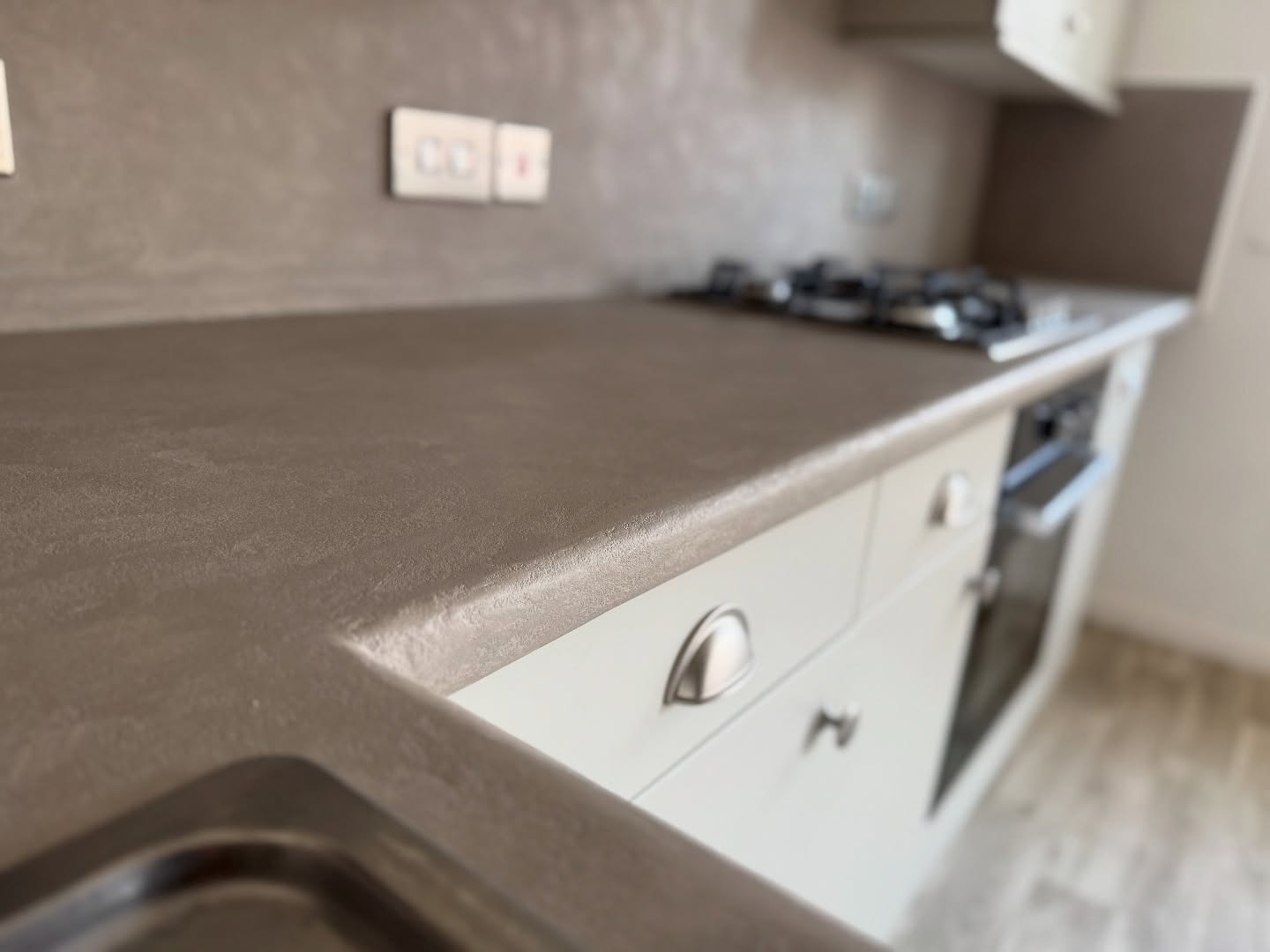
Microcement is an incredibly popular wall and floor covering that can be applied over an impressive range of existing materials. A modern-day alternative to plaster and tiles, microcement gives your kitchens, bathrooms and other rooms in your domestic or commercial property a new lease of life. However, just like everything, microcement needs to be maintained in order to ensure its integrity and prolong its lifespan. But how can you do that? In this article, we’ll be telling you what microcement is, along with how you can clean it safely and effectively.
Microcement is a material used to cover a wealth of surfaces and materials. It’s designed to inject new life into your interior spaces, whether domestic or commercial. Microcement from Options 4 Surfaces comes in a wide range of colours and finishes. This gives you the ultimate choice to ensure your new microcement walls and floors seamlessly suit your taste and style.
Microcement is a stylish-yet-practical, versatile and waterproof wall and floor covering. It’s designed to withstand heavy traffic, general wear and tear and moisture. This is why people often choose it as a wall and floor covering in bathrooms and kitchens.
A modern alternative to tiles, microcement is the perfect option for those looking to make a statement in their property. Microcement can be used for both internal and external applications. It can also be applied over a wealth of different materials, including:
Microcement surfaces can be tricky to maintain as soon as they’ve been applied. Once the microcement has been applied and left to dry completely, their maintenance is quick, easy and incredibly straightforward. But how can you clean microcement effectively throughout its lifetime, from its initial application right through to it being completely cured? We’re on hand to give you some advice. But if you’re ever in doubt, please ask microcement installers for help, such as our knowledgeable team here at Options 4 Surfaces.
This process is usually carried out by the microcement technicians, making sure they’ve left you with a surface that is completely smooth and debris-free. Usually, however, the homeowner or commercial property owner is advised not to clean the freshly applied microcement.
You also should refrain from touching it or using that room at all, in fact, until the microcement dries completely. If you’re in doubt about how to maintain the new microcement surfaces, then do not hesitate to ask a microcement professional, such as the ones we have here at Options 4 Surfaces.
Within the first 72 hours after application of the microcement and the sealant, it is possible to have some contact with microcement surfaces, but you should be extremely careful and gentle and do not use any liquid or moisture to clean it, either. This is because microcement, while it cures, is porous. If it comes into contact with moisture too early, it will cause irreversible damage to your microcement surfaces, including loss of colour.
If you absolutely have to wipe it, do so without applying any pressure and use a completely dry, soft cloth. However, it’s not recommended that you try to clean it at all within the first two days of application.
You should avoid any sort of foot traffic in that room and refrain from using your bathroom or kitchen for at least the first week so as to prevent the microcement from coming into contact with any form of moisture, including steam. In addition, never use anything abrasive on your microcement walls and floors, regardless of whether they’ve just been applied or have been present for many weeks, months or years.
It might sound counterintuitive, but it’s important not to clean it with any form of liquid, even plain water, within the first week of microcement application. Instead, make sure the room is well-ventilated. The microcement but also be dry completely before any cleaning is done. If you get the microcement surfaces wet within this timeframe, then it could cause the colour to change. As such, it can cause irreversible damage.
This also means that, with microcement walls and floors in bathrooms and kitchens, you should refrain from using the room for at least a week. This is to prevent the microcement from coming into contact with any form of moisture while it cures and dries. You can then use a damp cloth to clean the walls and floors, only once the first week has passed and the microcement has completely dried and is therefore considered to be no longer porous.
Once your microcement walls and/or floors have been completed for more than a week, it’s important that you maintain them effectively. The great thing about microcement surfaces is that they’re incredibly easy to clean and maintain. It can be done effortlessly by using only water. Take a damp cloth and gently wipe down your microcement surfaces, whether it be your walls or floors.
It’s imperative that you wait for seven days after application before using water to ocean your microcement walls and floors. This is because your microcement surfaces will still be porous, to an extent. It will be the case until they are cured completely, which is usually after seven days. Moving forward, indefinitely, you should continue to clean your microcement surfaces using only water. This ensures their colour and integrity for many years to come.
Options 4 Surfaces is pleased to provide clients with microcement walls and floors for kitchens, bathrooms and throughout the rest of your property. Offering both commercial and domestic solutions, no project is too big or small for our team of microcement experts. We can also provide silicone rendering services for homes and commercial buildings. If you would like further information about our microcement and silicone rendering solutions, get in touch with a member of our friendly, knowledgeable team today – we’re always happy to hear from you.
Unit 1
Fletcher Street
Elan House
Long Eaton
Nottingham
NG10 1JU